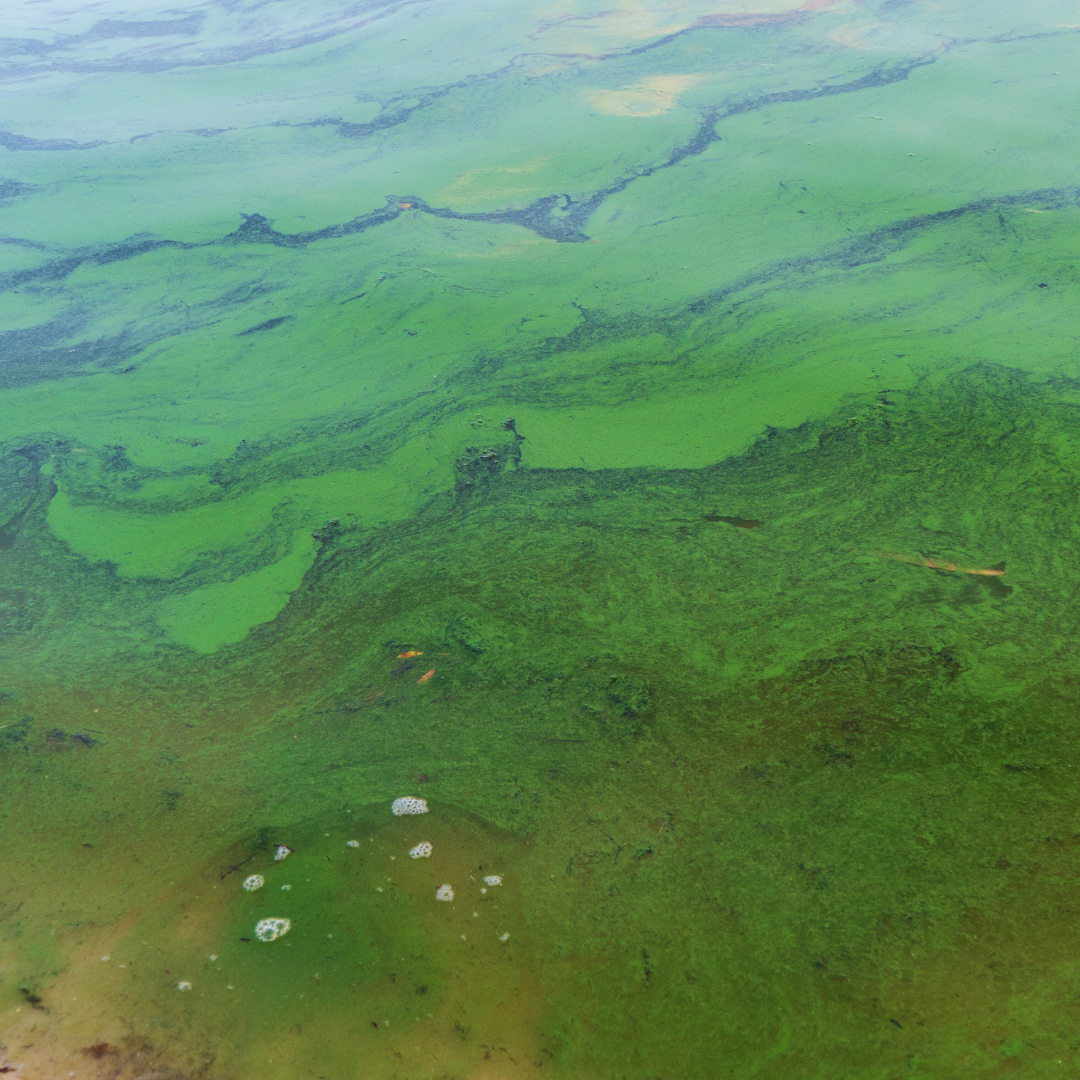Health risk to humans of blue green algae
Blue-green algae are not algae but a type of bacteria (called cyanobacteria) that are present in our lakes and rivers.
They are very small and can’t be seen with the naked eye. When environmental conditions are just right (they like warm still water with plenty of nutrients), they can multiply quickly forming a “bloom”
Blooms appear as a discolouration of the water (often a pea green colour) or as a visible scum layers or floating mats. Blooms usually occur in the summer and early autumn but can occur at other times of the year, if conditions are right.
There are no quick or easy remedies for the control of blooms once they appear in a lake or pond.

What are the health risks?
Blue-green algae may produce several different toxins which are harmful to human health. You may be at risk when you use a lake or other body of water which contains a bloom. You may be exposed during any activity where you may come into contact with the water, swallow water or breathe in water droplets for example swimming, sailing and boating, water skiing or even fishing.
These toxins can cause:
- Skin rashes,
- Nausea,
- Vomiting,
- Stomach pains,
- Fever,
- Headaches,
- Occasionally, more serious illness such as liver and brain damage.
How can the health risk be minimised?
Not all blue-green algae blooms are toxic but you cannot tell if a bloom is toxic by looking at it. If you see an algal bloom it is best to assume it is harmful and take the following precautions:
- Do not swim in the water
- Do not swallow the water
- Avoid contact with the algae
- Observe and abide by any warning notices positioned around the water
- For advice on eating fish caught recreationally from the water see the Food Standards Agency website Executive Summary - Microcystins in Fish | Food Standards Agency In respect of commercial fisheries, food safety advice should be sought from the district council responsible for the fishery. The district council may also liaise with the Food Standards Agency
Anyone who has come into contact with water containing blue-green algae should shower with fresh water immediately. If you have come into contact or drunk affected water and feel unwell you should obtain medical attention. Symptoms generally begin within hours after exposure.
Further Information
Blue Green Algae website - Northern Ireland has been experiencing an increase in blue-green algae blooms. To find out more about blue-green algae see www.daera-ni.gov.uk/blue-green-algae
NIEA are encouraging the public to get involved in citizen science and help monitor blooms of blue-green algae (cyanobacteria) to help protect public health and continue to enjoy our local water environment. Read more at www.daera-ni.gov.uk/news/help-protect-public-health-risks-harmful-blue-green-algal-blooms-bloomin-algae-app
